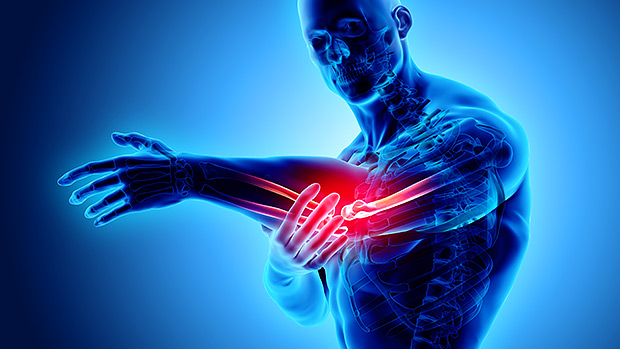Timings
Evercare Hospital Lahore
- Monday - Thursday (11 am - 01 pm)(07 pm - 09 pm)
- Friday (02 pm - 05 pm)(07 pm - 09 pm)
- Saturday (04 pm - 06 pm)
Contact Info
- Phone: 03060603646
- Whatsapp: 03060603646
- Email: Info@drwaqasjavedorthopedics.com
Pain Around Elbow

Elbow pain is a common complaint that can arise from a variety of conditions. It can affect individuals of all ages and is often seen in those who engage in sports or repetitive activities. Understanding the causes, symptoms, and treatment options is crucial for effective management and recovery.
Anatomy of the Elbow
The elbow is a complex joint that connects the upper arm bone (humerus) to the two bones of the forearm (radius and ulna). It allows for both bending and extension, as well as rotation of the forearm. The elbow joint is supported by muscles, tendons, and ligaments.
Common Causes of Elbow Pain
- Tennis Elbow (Lateral Epicondylitis): Overuse injury affecting the outer elbow, common in racquet sports.
- Golfer’s Elbow (Medial Epicondylitis): Similar to tennis elbow but affects the inner elbow.
- Olecranon Bursitis: Inflammation of the bursa at the back of the elbow.
- Elbow Sprains or Strains: Injuries to the ligaments or muscles around the elbow.
- Fractures: Breaks in the elbow bones due to trauma.
- Arthritis: Degenerative joint disease affecting the elbow.
Symptoms of Elbow Pain
- Pain in the elbow joint, which may extend to the forearm and wrist.
- Swelling and tenderness around the elbow.
- Stiffness, making it difficult to bend or extend the arm.
- Weakness in the arm, wrist, or hand.
- Numbness or tingling, especially in the fingers.
Diagnosing Elbow Pain
- Physical examination to assess pain, swelling, range of motion, and strength.
- Imaging tests like X-rays, MRI, or CT scans for a detailed view of the elbow structures.
- Nerve conduction studies if nerve compression is suspected.
Treatment Options
- Conservative Treatments:
- Rest and avoidance of activities that exacerbate pain.
- Ice applications to reduce swelling.
- Over-the-counter pain relievers and anti-inflammatory medications.
- Physical therapy to strengthen and stretch the muscles around the elbow.
- Surgical Treatments:
- Considered when conservative treatments fail.
- Procedures may include tendon repair or release, removal of damaged tissue, or joint replacement in severe arthritis cases.
Recovery and Prevention
- Recovery time varies depending on the cause and severity of the elbow pain.
- Wearing protective gear during sports and taking breaks from repetitive tasks can prevent elbow injuries.
- Regular exercises to strengthen the arm muscles and improve flexibility can also help.
Conclusion
Elbow pain can significantly impact daily activities, but with proper diagnosis and treatment, most individuals can return to their normal routines. It’s important for patients to follow their healthcare provider’s advice and engage in preventive measures to avoid recurrence.

Conditions I Treat

- Knee Injuries
- Orthopedic Infections
- PCL Injuries
- Multi-ligament Injuries
- Joint Replacement
- Kneecap Dislocations
- Knee Replacement
- Sport Injuries of Knee
- Lower Limb Fractures
- Hip Injuries
- Hip Replacement
- Back Pain
- Shoulder, Elbow, Wrist
- Upper Limb Fractures
- Neck Pain